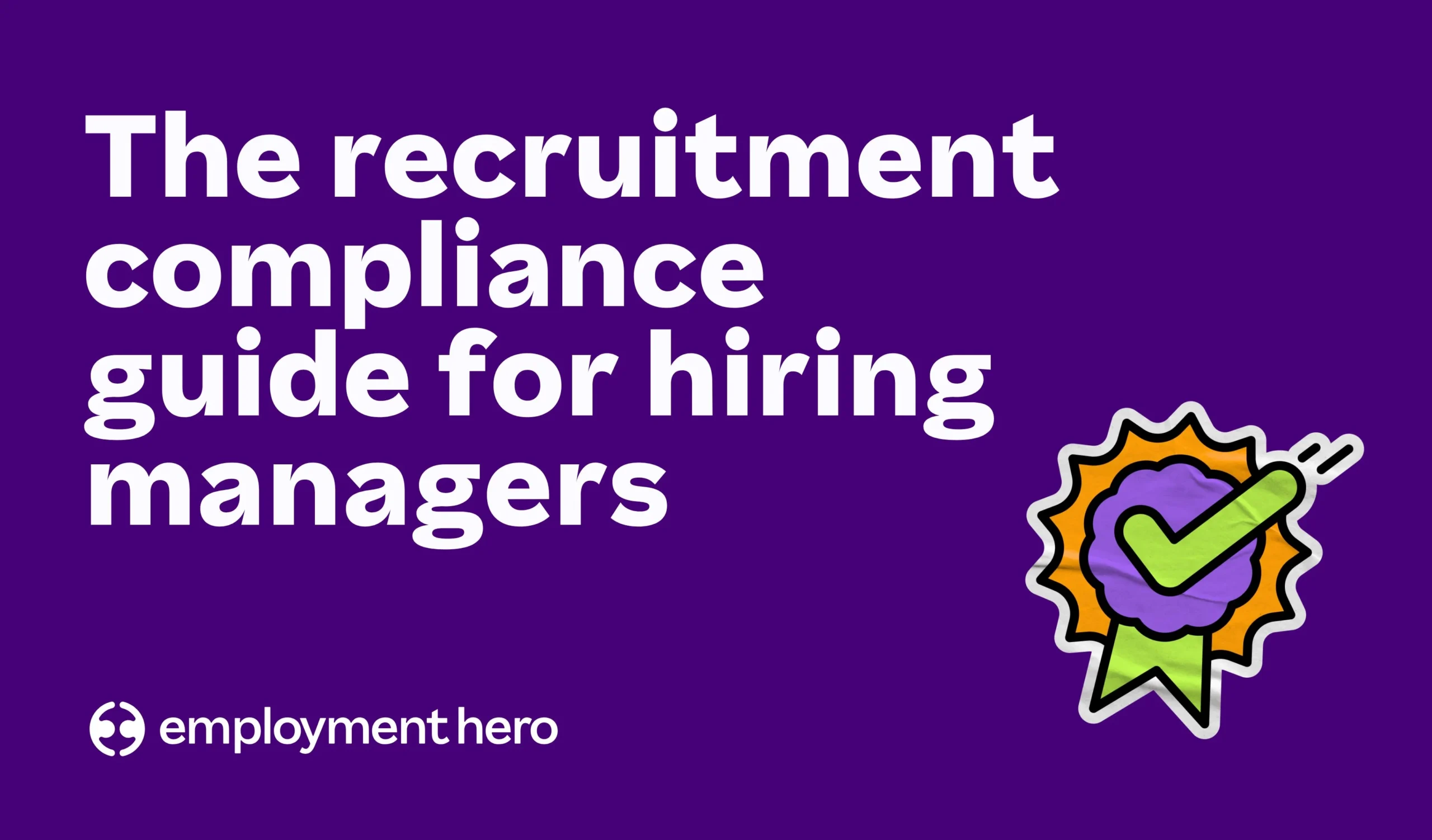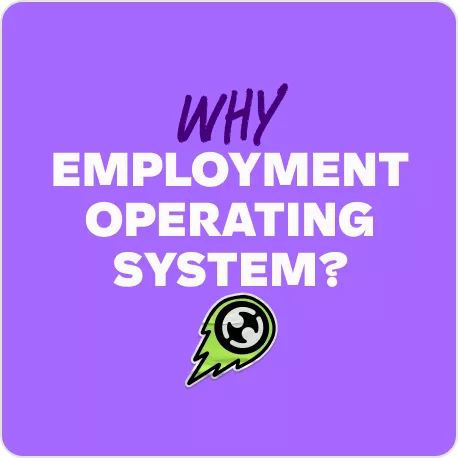Guide to Future Working Trends [Free eBook]
Published
Guide to Future Working Trends [Free eBook]
What will our working lives look like in 5, 10, or 15 years? In this workplace trends guide, we examine expert insights and the latest research to find out.
As technology continues to evolve rapidly and we move into a pandemic world, what can business owners and HR leaders do to stay ahead of the curve?
Let’s go beyond the crystal ball and look at the wheels that are already in motion toward the future of work.
For a comprehensive look at HR trends, download our eBook on the top HR trends for businesses in 2023 here.
What is in this future work trend guide?
In this guide, you’ll learn about:
- How technologies in development will affect future working
- The transformation of workspaces
- Workplace tools and tech to establish now for future success
- What future wellness at work will look like
Download the guide now.
How has the nature of employment changed?
Even though it’s easy to focus on the way employment has changed over the last few years, the classic model of employment prior to the pandemic was far from perfect.
We all know that the pandemic has forced a transformation of working styles. But when we think about these changes without the backdrop of a global pandemic, they can solve some very real problems that have always held the business world back.
For those new to HR, our guide on managing human resources provides a foundational understanding here.
Let’s take a closer look at some of the key ways that employment has changed, how businesses can adapt, and why – despite dark origins – these changes are a positive force for the future.
1. We had a global realisation about productivity
We’ve all seen the memes about working from home stereotypes – as soon as team members get a chance to work from home they’re going to be drinking wine, watching Netflix and just generally bringing this kind of energy to the workday:  Even though it sounds fun, we all know that this is absolutely not true.
Even though it sounds fun, we all know that this is absolutely not true.
In 2020, workplaces around the world discovered that when their employees worked from home, they were just as efficient as working in the office.
There’s plenty of evidence to suggest that employee performance and employee engagement may have even improved – employees are interrupted less often, can focus more easily and are able to take control over their working schedules.
In our survey of global employers;
- 30% anticipate continuing to work remotely or flexibly
- 27% anticipate allowing flexibility in location and/or hours of work
- Only 21% anticipate returning to the office completely
When asked why they would be continuing with flexible working for their company, our surveyed employers said;
- “We have proven that this is just as productive as working in the office.”
- “Partly [because] the pandemic and lockdown are still here, partly because we have seen some increased efficiency.”
- “There is an appetite for this kind of working and our data suggests that productivity can be maintained in such an environment.”
2. We now know we can work from anywhere
As leaders’ fears about productivity are put to rest, we’re now starting to see that teams really can perform remote work effectively from anywhere. As an employee, this poses a great opportunity.
They could go and work from a friend or family member’s house. They could extend their holiday and work in paradise for a while. They could move interstate or overseas for a partner and not have to worry about their job.
Sound fun (and potentially romantic)? We think so too. For employers, the opportunity is just as great.
With fewer employees moving on due to changes in personal location, plus added employee happiness due to the freedom of remote work, you’ll see your retention rates jump.  How can we keep an employee that we love on the team if they’re moving abroad? The simple answer is Global Teams. We take care of managing local employment contracts, payroll and compliance for your international employees so you can easily keep them on the books.
How can we keep an employee that we love on the team if they’re moving abroad? The simple answer is Global Teams. We take care of managing local employment contracts, payroll and compliance for your international employees so you can easily keep them on the books.
Additionally to retaining great talent at home, international hiring can turn your candidate pool into a candidate ocean when recruiting.
As a small business owner, understanding when to hire new employees is crucial. Learn more in our guide here.
3. Businesses of distributed teams have an edge
Say you see two job ads.
Job Ad 1: This full-time role will be based in our lively city office, with hours being 8.30 – 5 pm. Be close to cafes, shops and public transport. Perks include; a great office radio with collaborative playlists, group work throughout the day and pizza every Friday.
Job Ad 2: We have a remote-first and flexible work approach, so you can choose to work from our office or from your home, wherever that may be. As our team is based all over the world, we’ve invested in smart technology to make working from different locations and on different schedules a breeze. We come together for bi-annual celebrations and run virtual events regularly to keep connected.
Which one would you choose? The first ad has classic perks; Friday lunch, close to cafes, and accessible by public transport. But there are also so many challenges for employees.
Staff are likely to be subject to long commutes, will have difficulty in logistically balancing work and care responsibilities, and job seekers from areas outside the office radius will be unable to apply.
For the second ad, job seekers will be able to enjoy office culture if they so wish but will also be able to have a much-improved lifestyle afforded by the company’s flexibility.
They could work from home, interstate or abroad. They could live in a more financially accessible location without having hours of commuting time.
They can work while also having time to care for children or other loved ones. While they’re not bound by time and location, they’ll have everything they need to get their work done and stay connected with colleagues.
We’ve had a taste of what flexible work can give us. While its initial implementation took place under the stress of the pandemic, the world of remote work today is extremely appealing.
A recent study from Indeed found that 45% of job seekers are looking for flexibility in their next workplace.
Businesses that aren’t offering it could miss out on top talent.
Thinking of becoming a flexible workplace? Download our flexible work policy template here.
4. The purpose of the office is changing
Traditionally the office is a place where all work is done. Whether you’re writing a report, running a brainstorming session or knuckling down for some deep work – this has all taken place at a singular desk.
There are very few things in life that are as frustrating as being interrupted when you’re working to reach a hard deadline. Turning off your notifications and settling in at home gives you the best chance of getting things done.
An indisputable bonus of the office is its functionality as a collaborative space.
With most offices being open plan and having designated meeting areas, it’s perfect for team building days, group projects and collaborative thinking.
When given the option, employees are likely to use the workplace this way, so businesses should be looking to explore this function. How can you help your office spaces become ones of creativity and connection?
Measures such as providing breakfast or lunch, investing in collaborative spaces and providing the technology to make interstate or international workers included can help make this powerful adjustment.
5. Diversity is non-negotiable
Although this had been the case prior to last year, the Black Lives Matter movement of 2020 was a further reinforcement that diversity and inclusion are an absolute must.
According to the Glassdoor Diversity and Inclusion Workplace Survey 2020, 76% of employees and job seekers say a diverse workforce is an important factor when evaluating companies.
Fostering diverse and inclusive workplaces also opens your company up to invaluable diverse thinking. The mutual benefits for employees and businesses to embrace diversity are well known among many leaders.
With diverse insights come more opportunities for problem-solving, accessing larger markets and overall business growth.
Throwing back to international hiring – a great way to ensure a diverse team is to open your talent pool to the largest number of candidates.
When you make roles at your company globally accessible, you’re going to attract candidates that are truly from all walks of life – leading your business to not only benefit from diverse thinking but also bring international market knowledge to your team.
Remote work can also make the workplace more accessible to other diverse workers in the community. Neurodiverse workers and workers with a physical disabilities may benefit from the ability to work partially from home, as will working parents and carers.
Learn more about supporting your neurodiverse workers and workers with a disability.
6. Cloud technology is key to efficiency
You can’t talk about the changing nature of work without looking toward technology. When the world fled from offices last year, many businesses were caught without the proper technology to make working remotely possible.
Suddenly without the filing cabinet or the office hard drive, many teams were forced to look into clunky short-term solutions.
Excel spreadsheets swapped between teammates, photos of filled-out forms uploaded as attachments, literally hundreds of emails…  Working during the pandemic was as clear a signal as ever that cloud technology is the key to efficiency.
Working during the pandemic was as clear a signal as ever that cloud technology is the key to efficiency.
With many employees quickly gaining the digital skills required to use different programs, there’s no going back to manual processes.
To further streamline your HR processes and reduce admin time, check out our free guide here.
When you get the right technology structures in place, working from anywhere is a breeze.
Essentials on the remote working software list are:
- An instant messaging system (think Slack)
- Safe and secure file storage (think Google Drive)
- Cloud HR and Payroll (think Employment Hero 😉 )
The future of human resources is here, and its capabilities are only getting stronger. From gathering employee data and unveiling the world of people analytics, right through to managing employee benefits, the world is your oyster when it comes to HR tech.
Learn more about taking HR digital.
7. Digital recruitment and onboarding are the new normal
If the nature of employment has changed, of course, that means the nature of hiring has changed too.
Now that businesses are discovering the power of distributed teams (teams that work in the office or remotely from various locations), this is shaking up the world of recruitment and onboarding.
When you’re hiring for a distributed workforce, chances are you won’t physically meet many of your candidates during the recruitment process.
While this can be a little odd at first, if you have the right processes in place, online recruitment can be just as effective as an in-person program.
Your helping hand through digital recruitment? An Applicant Tracking System (ATS).
Applicant tracking system technology serves as a central place for hiring throughout each stage of the recruitment process including job postings, communicating with candidates, storing resumes and internal notes, scheduling interviews, collecting interview feedback, and extending offers to candidates.
It’s a game-changer for recruitment conducted online.
Hiring managers may want to take a little bit of extra time to get to know the candidates or ask them remote-specific questions to make sure they’re right for the role.
🌏 Looking for specific talent overseas? Read our guides on finding and hiring sales and tech talent.
Are you prepared for the new world of employment?
Major changes to the nature of employment don’t happen regularly. We’re at an interesting point in history right now – seeing a transformation of the world of work we’ve always been familiar with.
Although there are challenges, businesses – especially SMEs – stand to gain so much from this new chapter of work. We’re ready to help you embrace these changes.
Prepare yourself for what’s coming in the future work.
Download our guide now.
Related Resources
-
 Read more: Employment Essentials: Performance Management for SME’s
Read more: Employment Essentials: Performance Management for SME’sEmployment Essentials: Performance Management for SME’s
Effective performance management is more than ticking a compliance box – it’s a critical driver of employee engagement, business productivity,…
-
 Read more: Recruitment compliance guide for hiring managers
Read more: Recruitment compliance guide for hiring managersRecruitment compliance guide for hiring managers
Learn how to manage compliance when finding talent and interviewing candidates in your business.
-
 Read more: Hiring issues holding you back? The business owner’s guide to competing for top talent
Read more: Hiring issues holding you back? The business owner’s guide to competing for top talentHiring issues holding you back? The business owner’s guide to competing for top talent
Published Hiring great people is one of the most powerful ways to grow your business – but it can also…










